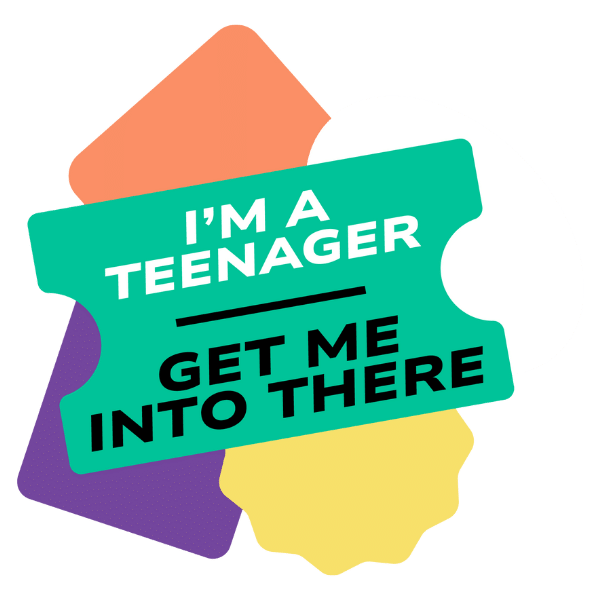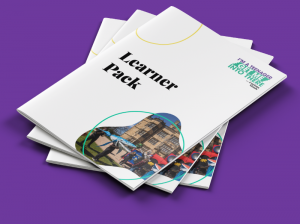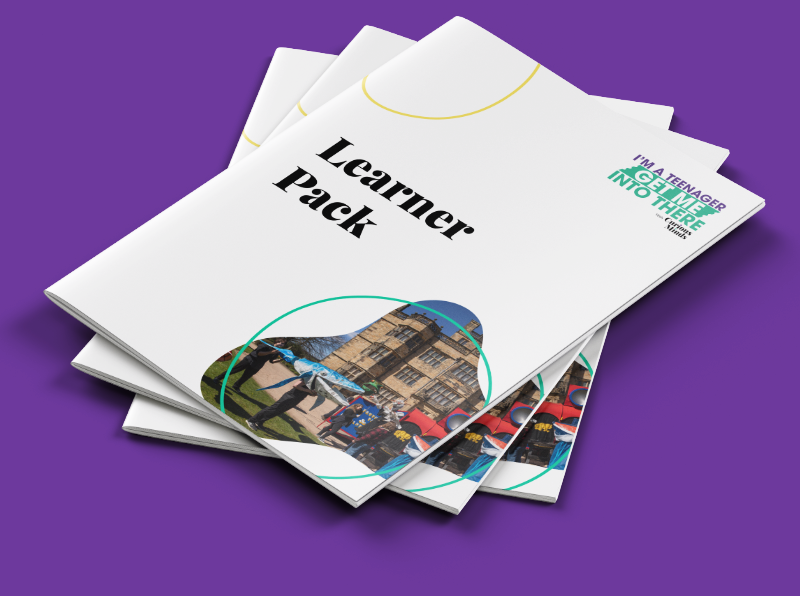
Interactions with Young People
This module focuses on the visitor experience from a young person’s perspective and what front of house staff can do to welcome them.
Through the Hope Streets programme young people told us they sometimes didn’t feel welcome in museum settings. They described some experiences as ‘boring’, ‘like school’ and ‘not for them’.
Venue staff told us they sometimes feel uncertain about young visitors and felt a need to ‘keep an eye’ on them, question them or ignore them.
We will explore manageable, practical changes and actions you can take to ensure young people and staff have a positive experience and feel more comfortable interacting and engaging. Although we are focusing on young people this can work with all visitors.
Aims

1.
Consider how we interact with young visitors

2.
Reflect on what it was like to be a young person yourself

3.
Empathise with young people’s real life experiences
Intro
Let’s think about the ‘barriers’ we might be putting in the way of young people and how we could use ‘enablers’ to create positive engagements instead.
This builds on what you may have covered in previous modules on perceptions of young people and the types of rules we use.
As a recap, barriers tend to use negative language or instruction to stop an unwanted behaviour. They are usually rooted in assumptions or stereotypes which are often incorrect.
Enablers encourage the behaviour we would like to see. They are rooted in the belief that visitors are interested and want to engage, but might need a little help.
For example, a barrier might be a member of staff assuming young people are entering the space to cause trouble and following them around.
An enabler might be a member of staff welcoming the young people into the building, asking them if they need help to find something in particular or letting them know what they can do.
We acknowledge that sometimes it is necessary to stop somebody from doing something for a very good reason. The key is ensuring this is communicated in a positive way, without making a young visitor feel unwelcome.
Activity 1
Our younger selves
First, let’s remind ourselves of what it was like to be a teenager…
Can you think back to your teenage self and identify a situation when you were stopped from doing something by an adult?
In your learning journal please answer the questions below:
Get your Learners Pack here

- What were you stopped from doing?
- How were you stopped form doing it?
- How did you feel?
- Were you able to discuss the reasons why you were stopped?
Now think about a time when someone supported you to do something. Again, please use your learning journal to answer the questions below.
- What were you supported to do?
- What was said or done that made it a positive experience?
- How did you feel?
- What difference did it make?
Please keep your answers in mind for the next activity.
Activity 2
Spotting, identifying and dealing with a sliding door moment
Let’s explore what we mean by a ‘sliding door moment’ and how barriers and enablers can help or hinder a pivotal interaction with young people.
A sliding door moment in a cultural venue is when staff feel uncomfortable dealing with a situation which could escalate into conflict and confrontation. This may be a subtle incident such as asking young people not to touch a piece of artwork, or a more serious incident where young people are asked to leave due to their behaviour.
In order to explore this further young people from Oldham Theatre Workshop have recreated real life experiences of young people engaging with cultural venues.
Each of these five films show young people and staff at a cultural venue experiencing a ‘sliding doors’ moment.
These first clips show a ‘barrier’ being put in place.
In your learning journal, make notes about the following questions for each of the films:
What barriers did members of staff put in place in each of these scenarios?
What effect did this have on the young visitors?
What advice would you give to the member(s) of staff to create an ‘enabler’ rather than a ‘barrier’, leading to a more positive experience?
Now, watch these clips, showing a more positive outcome in each scenario as an ‘enabler’ is put in place.

Get your Learners Pack here
Are the ‘enablers’ shown here the same as in your advice?
In your learning journal please write down any other take aways from the films that you might find useful in the future. These might be sentence starters or ways to approach a difficult conversation about the rules of your venue.
Activity 3
Negatives
In your learning journal write down any ‘sliding door moments’ that have happened in your workplace involving a young person that ended with a negative outcome
Always have in mind the visitor’s journey from the moment they approach your building to the end of their visit.
Ensure you are not overloading your visitors with information straight away and you are giving them the right rules, for the right behaviours at the right time.
Can the rules be a learning opportunity or spark their curiosity?
Can the rules be communicated using positive language?
- What happened?
- What were the barriers?
- Having watched the films what could you or your colleagues do differently?

Get your Learners Pack here
Positives
In your learning journal write down any ‘sliding doors moments’ that have happened in your workplace involving a young person that ended with a positive outcome
Always have in mind the visitor’s journey from the moment they approach your building to the end of their visit.
Ensure you are not overloading your visitors with information straight away and you are giving them the right rules, for the right behaviours at the right time.
Can the rules be a learning opportunity or spark their curiosity?
Can the rules be communicated using positive language?
- What happened?
- What were the barriers?
- Having watched the films what could you or your colleagues do differently?
Practicing sliding door moments
It can be difficult to think quickly when faced with a sliding door moment in real life. We encourage you to talk with your team in advance about the best way to respond in situations you are likely to face. You might even like to practice together so it feels natural in the moment.
Share your learning, these films and activities with your colleagues and make this a regular topic of conversation at team meetings.
The more you talk about sliding door moments and think about how you can approach situations with an ‘enabling’ mindset, the easier it will become.
Consolidating your learning
In your learning journal please reflect on what you have learnt today and how you could put this into action in your venue.

Get your Learners Pack here
And Finally
How are you going to share your learning with your colleagues? Your visitors?
Did you have any lightbulb moments?
Write down one small thing you are going to do as a result of this module
Write one bigger thing you are going to do as a result of this module